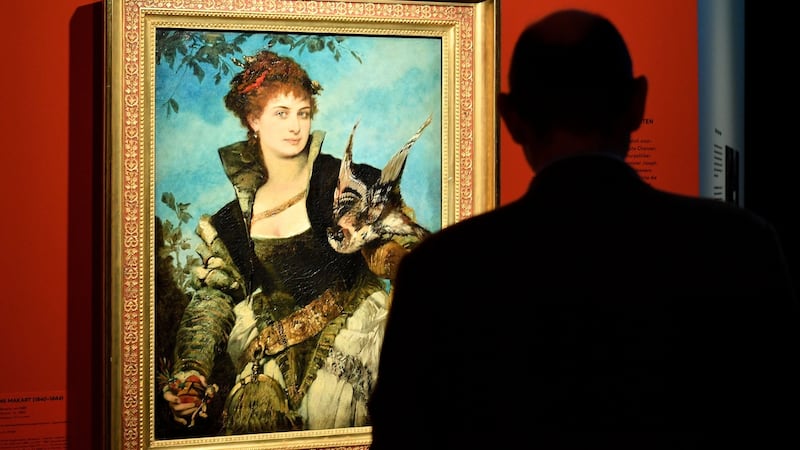After lost decades in a squalid Munich apartment and five years in a secret depot, the notorious Gurlitt art collection has finally gone on public display.
Some 450 of the most valuable works – lost paintings by Renoir, Cézanne, Monet and others – have gone on view in two shows in Bonn and in Berne.
The parallel exhibitions also explain the problematic history of the 1,500-item collection comprising painting, sketches and sculptures.

The Berne exhibition, Degenerate Art, Confiscated and Sold, shows 150 works representing various artistic movements including symbolism, expressionism and constructivism. The works are on show to the general public for the first time and explain how they fell foul of rigid Nazi notions about "German" and "un-German" art.
The Bonn show, Nazi Art Theft and its Consequences, concentrates on looted works and others that may have been stolen from their Jewish owners or sold for a knock-down price.
But the double exhibition has raised fresh questions about Germany’s handling of the Gurlitt case after the paintings’ spectacular, chance discovery.
On a train
The story began in 2010 on a train between Zürich and Munich when customs officials conducting spot checks encountered an agitated, elderly man carrying €9,000 in cash. He said he was on his way home after selling a painting in Switzerland.
When a subsequent investigation revealed the man, Cornelius Gurlitt, had no tax number, no health insurance and never appeared to have worked, police raided his Munich apartment in 2012. There they found – and seized – the collection assembled by Gurlitt’s art-dealer father, Hildebrand Gurlitt.
In the Third Reich era Hildebrand Gurlitt was authorised by the Nazis to sell off modernist art works they dubbed “degenerate”, but he is suspected of keeping for himself works sold under duress by their owners, including persecuted Jews.
In 1945 the elder Gurlitt told US occupying forces the collection was destroyed in the fire-bombing of Dresden. When news of the hoard leaked in 2014, it sparked a media circus with journalists camping outside the apartment of the reclusive Cornelius Gurlitt.
He suffered from ill health and died months after the story broke, without ever seeing his beloved collection again. Furious at his treatment by German authorities and the widespread assumption that the hoard comprised largely looted art, he changed his will and left the hoard to the Kunstmuseum in Berne.
Provenance researchers
After four years of checks, just six works from the collection have been definitively identified as looted art so far.
Last week provenance researchers examining the Gurlitt collection identified the sixth work – Portrait of a Seated Young Woman by Thomas Courture – as having belonged to George Mandel, a French Jewish politician.
“That researchers have been able, through their meticulous and unstinting work, to identify the painting by Thomas Couture as Nazi-looted art demonstrates once again how important it is not to let up in our efforts in the field of provenance research,” said Monica Grütters, Germany’s federal culture minister.
But the fall-out from the seizure of the Gurlitt collection revived a heated debate – and a series of lawsuits – over whether Germany is doing enough – and quickly enough – to close the unresolved chapter of looted art.
Stonewalled
Next year marks the 20th anniversary of the Washington Principles, in which Germany and other signatory states committed to returning Nazi-confiscated art. After years of being stonewalled by German officials, some looted art claimants accuse Germany now of disregarding the spirit of the principles by being overly secretive and over-zealous in their provenance research.
While some German researchers claim the Gurlitt collection contains no more than a dozen looted works, other international experts say there may never be a definitive answer.
"It is undeniable that Hildebrand Gurlitt profited from the plight of Jewish art owners during the Third Reich," said Catherine Hickley, author of The Munich Art Hoard: Hitler's Dealer and His Secret Legacy.
Regardless of differing opinions over the rights and wrongs of the Gurlitt collection – and its seizure – Hickley welcomes the Berne-Bonn exhibitions for raising the profile of looted art and many unresolved issues.
“Buyers and sellers of art are more careful now about provenance, no one can overlook it anymore,” said Hickley. “And I think, in part, we have Gurlitt to thank for that.”



















